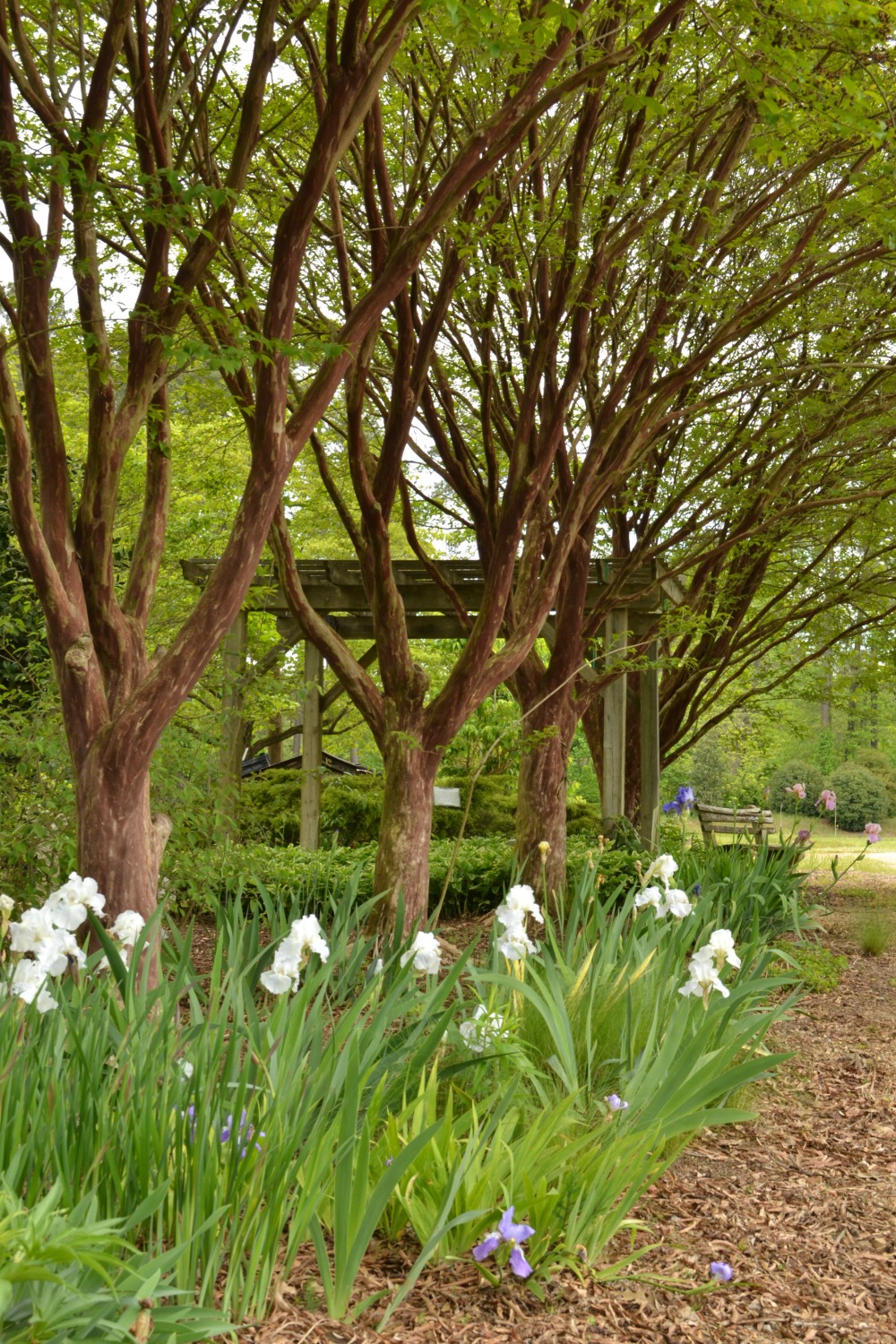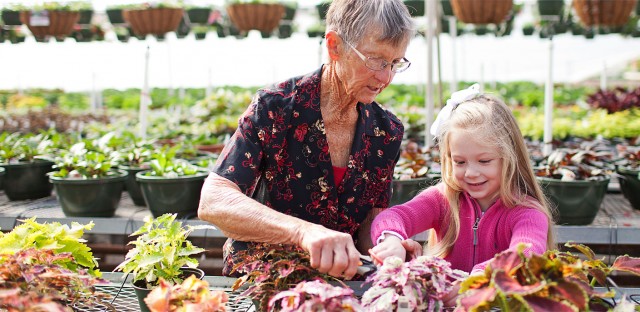Traditional Southern Garden Favorites
Gardening in the southeastern United States has been popular for many decades. Our long growing season, nutrient rich soils, and diverse habitats allow gardeners to enjoy thousands of different species in their landscape. Southern landscapes can be as varied as these choices allow. There are a handful of plants that tend to recur from one garden to the next, from Louisiana to Georgia, and north to the Carolinas. I like to call these “southern favorites”. Step aside grits, collard greens and sweet tea, we are talking about garden favorites!
Dogwood, redbud, and magnolia are three of the most popular trees found in the southern landscape. These natives can provide quite a floral show during their blooming seasons. Our native dogwood (Cornus florida) and redbud (Cercis canadensis) can be stunning when viewed in their native habitat under large pines and hardwoods.

The redbuds usher in spring with their vivid purple flowers, followed by the dogwood’s white or pink floral display. Watch out for ‘Forest Pansy’ redbud. It has the usual heart shaped redbud leaf, only it is purple, adding to the seasonal interest of the tree. Contrasting ‘Forest Pansy’ is ‘Hearts of Gold’ redbud with an electric yellow leaf color. These two are quite the pair.

Southern magnolia (Magnolia grandiflora) is a tree that many people, non-gardeners included, are familiar with. The dark green foliage with brown backsides is hard to mistake as well as the large white flowers. Many gardeners are planting trees that mature to small sizes to match smaller lot sizes. ‘Little Gem’ is the perfect cultivar to plant if size is an issue in the landscape. Maturing at sizes between twenty to twenty five feet, ‘Little Gem’ is a much smaller plant than other popular cultivars like ‘D.D. Blanchard’ or ‘Claudia Wannamaker’.

I can not talk about southern favorites and trees without mentioning live oak (Quercus virginiana). It is hard to deny the beauty of moss draped live oaks overhanging the streets of Charleston,Savannah, or New Orleans. These trees are as important to the ambiance of these cities as the architecture and history. Live oaks do not perform as well in areas west of the coastal plain in North Carolina due to cooler temperatures combined with heavy soils. There is a nice specimen in Raleigh at the J.C. Raulston Arboretum.

Crepe myrtles (Lagerstroemia indica) were introduced to the United States from China in the 1700’s, and have been a mainstay in southern gardens since. Crepe myrtles are true four season plants that deserve a place in most any landscape. Summer flowers are followed by vivid fall foliage colors while the form and decorative bark provide interest in the winter months.

Crepes are found in sizes from 18” at maturity to over 30’ tall, and in shades of pink, red, white, purple. These plants have been used in many different ways in the landscape. Grouping crepes can create an explosion of color in the summer months while using individual plants as focal points can be just as beautiful. Check last month’s article for more information on crepe myrtles.
A drive through the countryside in late spring or early summer surely results in the spotting of hydrangeas (Hydrangea sp). This longtime southern favorite has always been popular in the garden, but its popularity has snowballed in the last six to eight years. There are many different species and hundreds of hydrangea cultivars available today. The old fashioned pom-pom type flowers are typically a cultivar of Hydrangea macrophylla, like ‘Nikko Blue’ which remains popular today.

Oakleaf hydrangea (Hydrangea quercifolia) with its large, hairy leaves and white panicle type flowers has also been revered in southern landscapes for many years. New introductions seem to emerge daily and differentiating between one plant to the next can become difficult. While these new cultivars can bring new colors, sizes and forms to the garden, it is hard to ignore plants that have been popular for decades.
Much like hydrangeas, camellias, azaleas, and gardenias remain popular in our landscapes. Camellias (Camellia sp.) represent one of our best plants for late fall, winter, and early spring color. There are again several different species and many different hybrids available, but the easiest way to split the group in two is by looking at fall, then spring blooming cultivars.

Generally, the fall bloomers are cultivars of Camellia sasanqua, and the spring flowering forms are Camellia japonica. The hybrids and other species can fall under either group. The fall blooming plants typically have smaller single flowers with smaller leaves while the late winter to early spring bloomers have larger flowers and foliage. Like hydrangeas and azaleas, there are hundreds of different camellias available for the garden.
Like camellias, azaleas are great evergreen shrubs for shady to semi-shady areas. Dogwoods and redbuds under planted with azaleas can be a captivating sight in spring (golf fans, think Augusta National).

Gardeners that had become tired of azaleas have been re-invigorated by the Encore azaleas. Encore azaleas are a group of azaleas that re-bloom three times a year. They have the traditional spring flowers, followed by flowers in the summer, then again in the fall. No longer are azaleas colorful for just two weeks in the spring.
Gardenias (Gardenia jasminoides) are known as much for their fragrance as for their flowers. Traditional forms of gardenia could reach heights over six feet tall. Newer introductions like ‘Kleims Hardy’ will remain closer to four feet tall and wide while ‘Radicans’ reaches 18” in height and two feet in spread. The white flowers release a rather delightful sweet fragrance.

Many of these plants are close to our hearts because they remind us of our grandparents or parents gardens. This is definitely true with sweetshrub (Calycanthus floridus), also called Carolina allspice, sweet betsy, and spicebush. I have many people inquire about this plant based solely on its fragrance. The common story with this shrub is that people remember it being planted by the “old home place” when they would visit relatives. Sweetshrub is a native deciduous plant that can reach eight feet tall and wide. The rusty red colored flowers open in May. Much like gardenia, the fragrance is definitely stronger in the early morning or late evening hours.
These are just a few of the plants that I call “southern favorites”. Others that could also be considered are pyracantha, wisteria, jessamine, rose, and rhododendron. These plants are all tried and true in the southern landscape. Add some of these plants to your landscape, and keep the tradition alive!
Happy Gardening!
Brad Rollins




